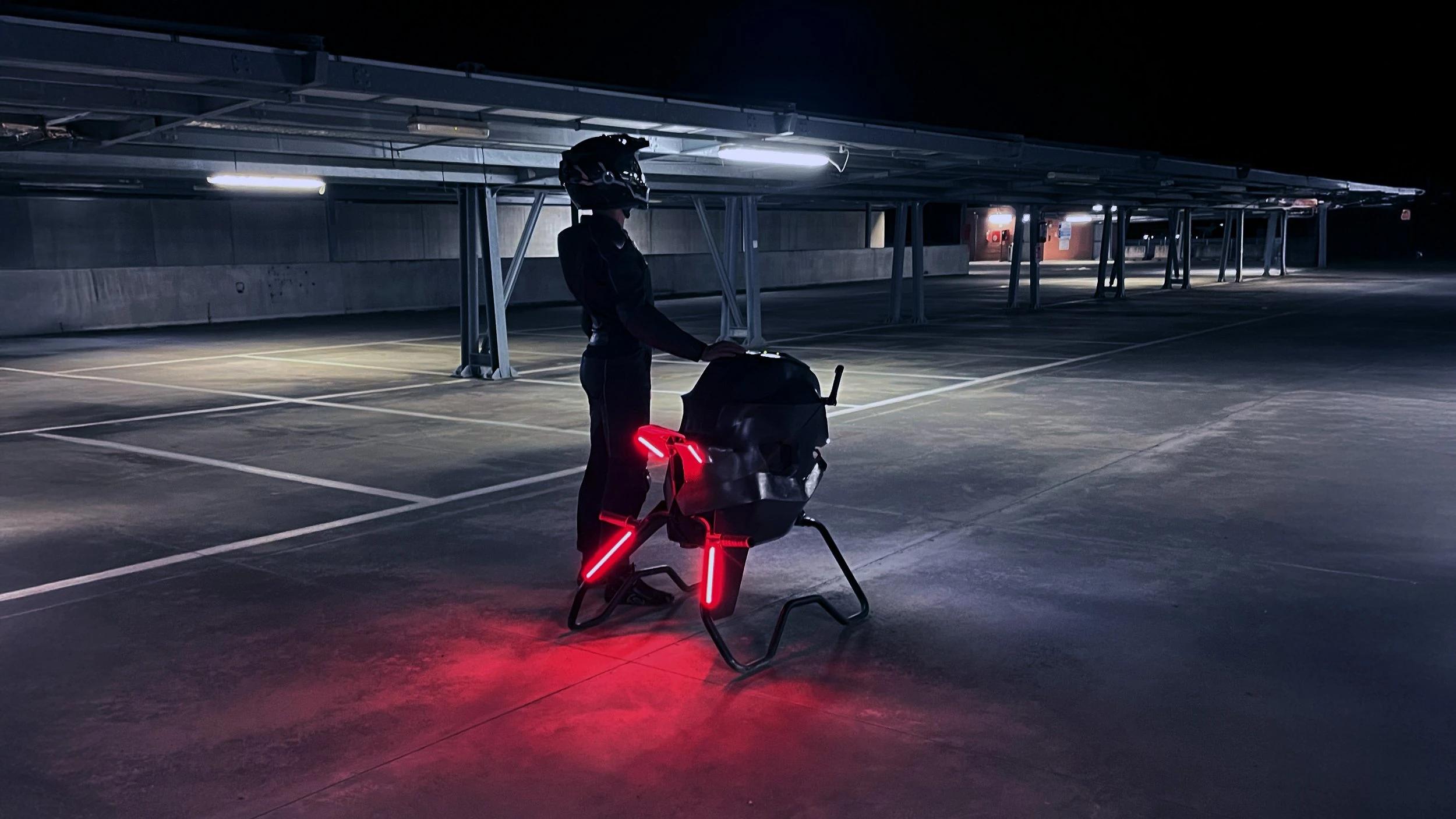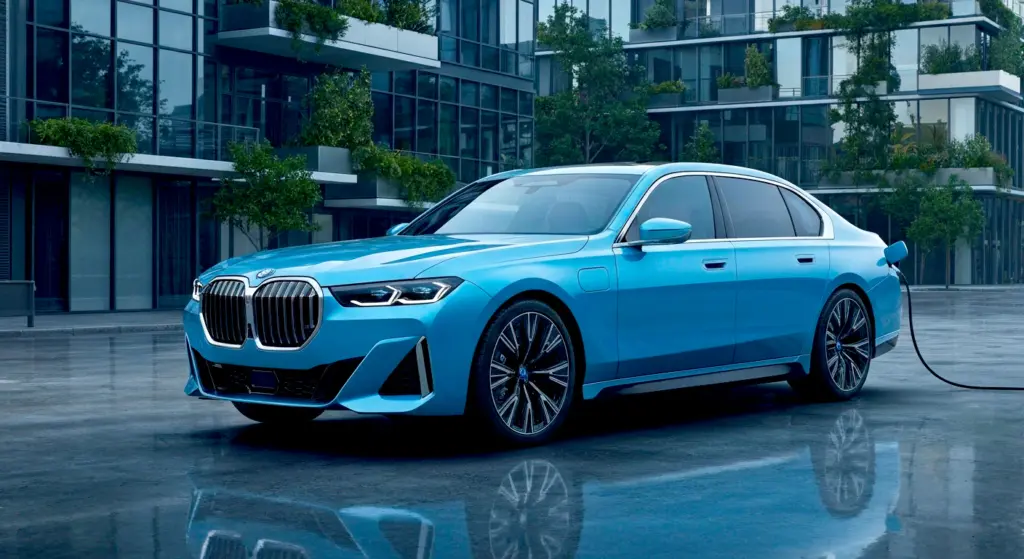Get ready, because the future of personal mobility may be closer (and cooler) than we think! I present to you the Volonaut Airbike, a creation that looks like it came straight out of the movies, promising to revolutionize the way we move through the skies. But is this “flying motorcycle” really all that? Let’s dive into the details!
What is the Volonaut Airbike and why all the buzz?
Imagine piloting something that resembles the speeder bikes from Star Wars or a vehicle Batman himself would use. That’s the promise of the Volonaut Airbike, a single-seat personal aerial vehicle prototype developed by Polish inventor Tomasz Patan (yes, the same name behind the Jetson ONE eVTOL). The concept is bold: a “flying motorcycle” with jet propulsion, minimalist design, and no visible rotors, capable of reaching impressive speeds.

The project has recently emerged from “stealth mode,” sparking an instant buzz online. Videos showing the prototype in flight went viral, sparking heated debates about its authenticity and feasibility. After all, we’re talking about technology that challenges our current perceptions of personal transportation – something that until recently belonged only to the realm of fantasy.
How does the Airbike’s design redefine aerial aesthetics?
One of the most striking features of the Volonaut Airbike is undoubtedly its design. Described as sleek, stealthy, and “jet-like,” it radically distances itself from other personal aerial vehicles. The absence of exposed rotors or propellers not only gives it a clean, futuristic appearance but also allows, according to the developers, “easy travel through most confined areas.” It’s a machine that looks sculpted to cut through the air in style.
This minimalist aesthetic is the result of smart use of advanced materials like carbon fiber and 3D printed parts. This makes the Airbike incredibly light—allegedly “7 times lighter than a typical motorcycle.” It’s a fusion of engineering and art, aiming not only for functionality but also undeniable visual appeal, almost like some cars that combine performance with a futuristic touch.
What technology powers the 124 mph speed?
The promise of reaching 124 mph (200 km/h) places the Volonaut Airbike in a performance tier well above competitors like the Hoversurf S3X (which tops out at about 68 mph or 110 km/h). The magic behind this speed lies in “jet propulsion.” Although specific technical details are kept secret, it’s heavily speculated that gas turbine engines are involved.

Evidence such as scorched ground observed under the prototype during tests supports this theory. The technology is comparable, at scale, to the jet suits used by Gravity Industries. Besides raw power, the Airbike features a “proprietary stabilization system enhanced by a flight computer,” designed to provide automatic hovering and easier control, making the flying experience theoretically more accessible.
Volonaut Airbike vs. Hoversurf S3X: Style or practicality?
The comparison with the Hoversurf S3X is inevitable. The S3X, although slower and described as “functional but not stylish” (resembling a “flying forklift”), has the advantage of already being available, tested, and even used by the Dubai Police. It represents the more pragmatic and proven approach to current personal aerial mobility, with a known price: $150,000 plus $10,000 for training.
Direct Comparison
- Top Speed: Volonaut (124 mph) vs. Hoversurf (68 mph)
- Design: Volonaut (Futuristic/Sleek) vs. Hoversurf (Functional/Exposed)
- Propulsion: Volonaut (Jet/Turbine) vs. Hoversurf (Propellers)
- Availability: Volonaut (Prototype) vs. Hoversurf (Available)
- Price: Volonaut (Undisclosed) vs. Hoversurf ($150k + Training)
The choice between the two seems clear: Volonaut bets on thrill, style, and raw speed, while Hoversurf focuses on safety, control, and immediate practical use. It remains to be seen how Volonaut will position itself in terms of cost and accessibility when (and if) it hits the market, a common challenge for disruptive technologies, as we see in speculations about availability and price of other innovative vehicles.
Real or fiction? Skepticism around the Volonaut
As expected, the cinematic launch of the Volonaut Airbike sparked a wave of skepticism. Many questioned whether the footage was real, computer-generated (AI), or simply a well-executed marketing stunt. The lack of videos clearly showing the takeoff and landing processes in the early materials fueled these doubts.

However, experts in the field, including one consulted by the YouTube channel “Supercar Blondie” (indirectly mentioned in sources as “Expert Breakdown”), expressed “almost 100% certainty that it’s real” and that gas turbine propulsion is plausible. The existence of a working prototype and the conduct of flight tests, even if limited in coverage, indicate there’s substance behind the polished image. Skepticism is natural, but the evidence points to a genuine project, albeit in an early stage, as detailed by New Atlas.
Cultural impact and the future of the Airbike?
The Volonaut Airbike is more than just a vehicle; it’s the materialization of a science fiction dream. The comparison to Star Wars speeder bikes is constant and intentional. The promise of a “unique riding position with unobstructed 360-degree view” evokes a sense of total freedom, transporting the ethos of motorcyclists’ independence and speed into the skies.
There’s talk of the “birth of a new sky-riding culture,” with potential “flight tracks” and even “Airbike races.” The resemblance to the notorious flying motorcycle “Oppressor Mk II” from GTA 5 has led to speculation that the Volonaut would be the perfect addition to the eagerly awaited GTA 6, capitalizing on its style and potential for… well, let’s say, “mayhem” in the game. It’s a glimpse into a future where the sky isn’t the limit but the playground, possibly rivaling the high-speed performance we see on land.
When will we be able to ride a Volonaut Airbike?
This is where reality hits the brakes (or should we say the thruster?). The Volonaut Airbike is still firmly in the prototype phase. There’s no public price, release date, info on range, detailed technology disclosures, or manufacturing location. As highlighted by sources like Explorersweb, the project has just stepped out of the shadows.

The commercial version, if and when it arrives, is probably “many, many years” away. Initially, it will be a toy for the “rich,” likely “super impractical” for daily use. However, the existence of a functional prototype that’s been tested is a significant step and shows the “growing momentum behind personal aerial mobility.” It’s a long road, similar to the development of another personal mobility concept that also promises to revolutionize transportation.
Frequently Asked Questions (FAQ)
- Who invented the Volonaut Airbike?
It was invented by Polish engineer Tomasz Patan. - What is the maximum speed of the Volonaut Airbike?
The declared top speed is 124 mph (200 km/h). - Is the Volonaut Airbike for sale?
No, it is currently a prototype with no price or pre-sale available. - How does the Volonaut compare to the Hoversurf S3X?
The Volonaut is faster and has a sleeker design, but the Hoversurf is already available and field-tested, with a set price ($150,000 + training). - What propulsion technology does the Airbike use?
It uses “jet propulsion” — believed to be gas turbine engines, though full details have not been disclosed.
My take on the Volonaut Airbike is one of cautious optimism. The design is undeniably spectacular, and the promise of performance is electrifying. It’s the kind of innovation that captures the imagination and makes us dream of movie-worthy futures. However, the technical, regulatory, and cost challenges to make something like this accessible are immense. It’s a fascinating step, but there’s still a long journey from a functional prototype to an established “sky-riding culture.”
And you, what do you think of the Volonaut Airbike? Would you dare to pilot this futuristic machine? Leave your comment below!
Author: Fabio Isidoro
Founder and editor-in-chief of Canal Carro, he dedicates himself to exploring the automotive universe with depth and passion. A car and technology enthusiast, he produces technical content and in-depth analyses of national and international vehicles, combining quality information with a critical eye for the public.








